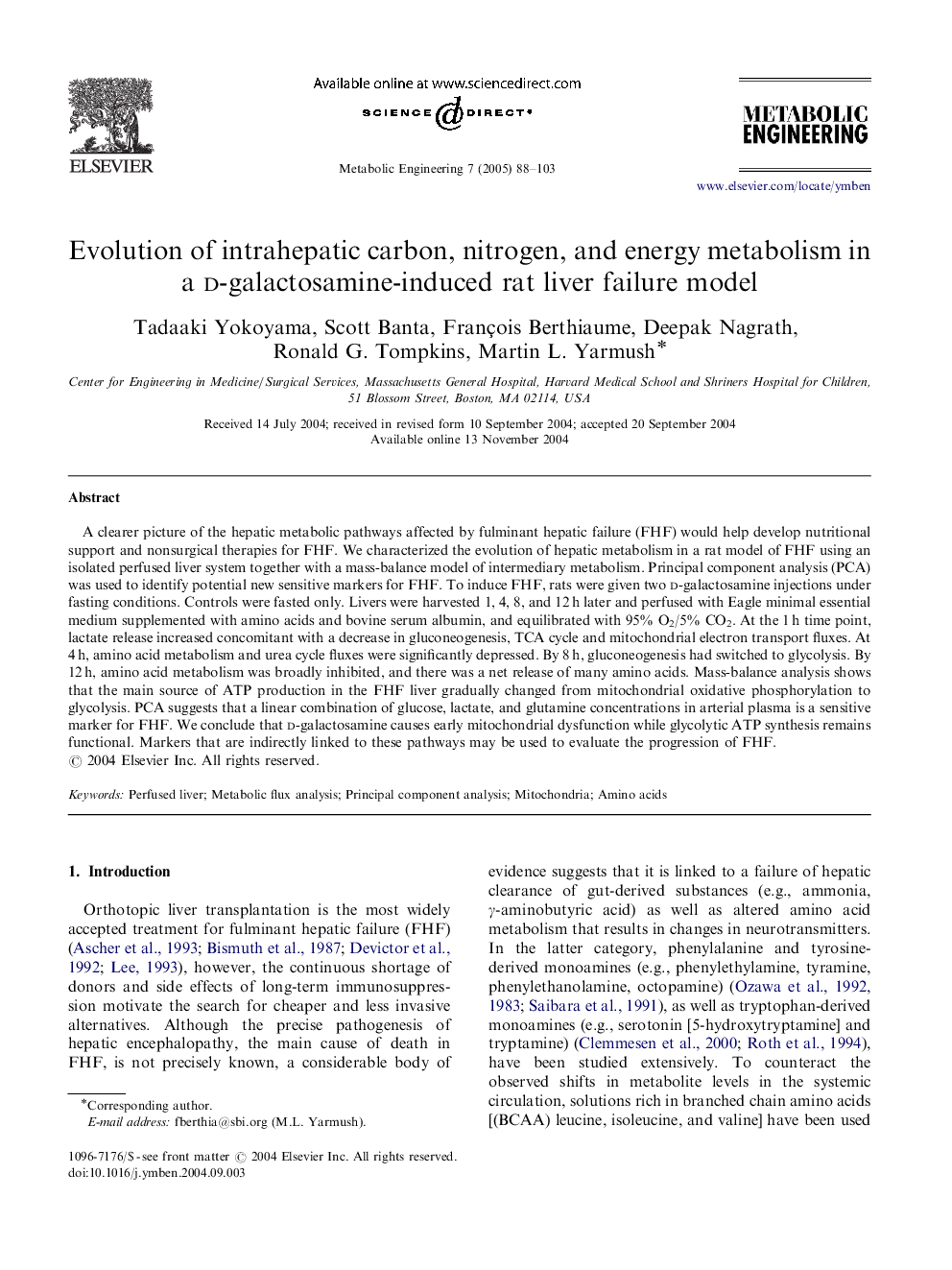| Article ID | Journal | Published Year | Pages | File Type |
|---|---|---|---|---|
| 10234670 | Metabolic Engineering | 2005 | 16 Pages |
Abstract
A clearer picture of the hepatic metabolic pathways affected by fulminant hepatic failure (FHF) would help develop nutritional support and nonsurgical therapies for FHF. We characterized the evolution of hepatic metabolism in a rat model of FHF using an isolated perfused liver system together with a mass-balance model of intermediary metabolism. Principal component analysis (PCA) was used to identify potential new sensitive markers for FHF. To induce FHF, rats were given two D-galactosamine injections under fasting conditions. Controls were fasted only. Livers were harvested 1, 4, 8, and 12Â h later and perfused with Eagle minimal essential medium supplemented with amino acids and bovine serum albumin, and equilibrated with 95% O2/5% CO2. At the 1Â h time point, lactate release increased concomitant with a decrease in gluconeogenesis, TCA cycle and mitochondrial electron transport fluxes. At 4Â h, amino acid metabolism and urea cycle fluxes were significantly depressed. By 8Â h, gluconeogenesis had switched to glycolysis. By 12Â h, amino acid metabolism was broadly inhibited, and there was a net release of many amino acids. Mass-balance analysis shows that the main source of ATP production in the FHF liver gradually changed from mitochondrial oxidative phosphorylation to glycolysis. PCA suggests that a linear combination of glucose, lactate, and glutamine concentrations in arterial plasma is a sensitive marker for FHF. We conclude that D-galactosamine causes early mitochondrial dysfunction while glycolytic ATP synthesis remains functional. Markers that are indirectly linked to these pathways may be used to evaluate the progression of FHF.
Related Topics
Physical Sciences and Engineering
Chemical Engineering
Bioengineering
Authors
Tadaaki Yokoyama, Scott Banta, François Berthiaume, Deepak Nagrath, Ronald G. Tompkins, Martin L. Yarmush,
